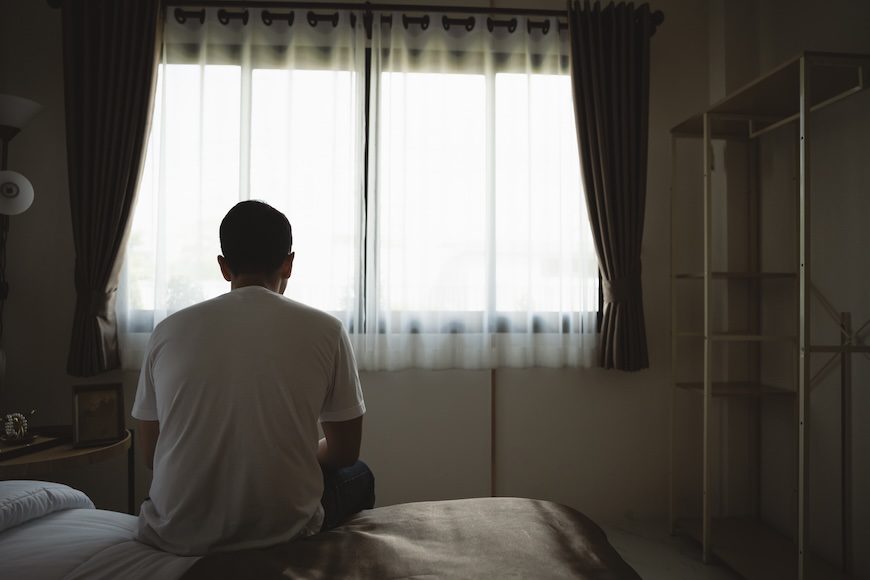During the peak of the COVID-19 pandemic, people all over the world would gather in the street at 7:00 P.M., cheering loudly and banging on pots and pans to show their appreciation for those fighting the spread of the virus. Doctors, nurses, and other medical professionals were hailed as “Healthcare Heroes” for working tirelessly to heal the sick and save lives.
A new Morbidity and Mortality Weekly Report (MMWR) by the Centers for Disease Control and Prevention (CDC) suggests we are a long way off from that “Seven O’clock Salute.”
Rethinking Mental Health in a Post COVID World
Heated Hatha Yoga for Depression
The wide-ranging research examined data from 3,395 participants in various employment categories, including healthcare workers and essential workers, before and after the onset of the pandemic. To understand their workplace experiences better, the researchers posed a variety of questions on topics related to mental health. These included trust in management, experiences of workplace harassment, the level of support received, and perceptions of workplace safety. Additionally, participants rated their well-being in terms of psychological factors like happiness, burnout, and sleep quality.
Among the report’s key findings:
Poor Mental Health Days Increased
In 2022, all workers surveyed reported 4.1 to 4.5 poor mental health days within the past month. However, for healthcare workers, this was a significant increase from the 3.3 days they reported in 2018.
Since the start of the COVID pandemic, the percentage of health workers who said they were experiencing burnout “very often” increased from nearly 12 percent to 19.0 percent. More than 45 percent reported some level of burnout. Factors contributing to burnout included a heavy workload, insufficient staffing, a lack of control over work, and inadequate resources.
Health workers who trusted in management and felt supported by their supervisors had better mental health outcomes. Additionally, healthcare workers experienced lower levels of burnout when they had sufficient time to complete work tasks and when they perceived the workplace as supportive of productivity.
Happiness Levels Declined
The percentage of healthcare workers who said they generally felt “very happy” didn’t change significantly over the four-year period covered in the report. But among other essential workers – including those employed by groceries, pharmacies, and convenience stores – happiness dropped from 33.9 percent to 20.5 percent. The report noted that this was the only category where essential workers seemed to fare worse than healthcare workers – and all other workers in general.
Turnover Intention Rose
The report noted that distressing work environments contributed to a record high number of health workers quitting their jobs, or at least thinking about quitting. From the time of COVID until 2022, the percentage of health workers likely to look for a new job with another employer increased from 11.1 percent to 16.5 percent, with over 44.2 percent considering job change in 2022. In contrast, turnover intention among all other workers actually decreased by five percent.
Workplace Conditions Worsened
Reports of being harassed at work more than doubled among health workers, up from 6.4 percent in 2018 to 13.4 percent in 2022. Harassment, including threats, bullying, and verbal abuse, created a hostile work environment that negatively impacted the mental well-being of health workers. Healthcare workers who reported being harassed had significantly higher odds of anxiety, depression, and burnout compared to those who were not harassed.
The amount of trust in management and feeling supported in the workplace also dropped among both health workers and essential workers. Involving healthcare workers in decision-making reduced their odds of experiencing depression symptoms. Additionally, struggling with what they considered poor work conditions took a toll on healthcare worker presenteeism – coming into work but with reduced productivity. Health workers had a presenteeism rate of a mere 28 percent in 2022, while other professions stood at 37 percent.
Potential Solutions
This report does suggest some practical steps employers can take to address workplace wellbeing.
Interventions addressing workplace conditions, such as increased managerial support and fostering trust in management, would go a long way toward enhancing mental health than approaches focused on specific individuals, the authors wrote. Fostering “safe” climates within organizations, where management prioritizes psychological health and stress prevention, would also go a long way toward addressing burnout and other mental health problems.
The report advocated for the role of organizational policies and practices to enhance security and reduce threats of harassment, bullying, and outright violence. It also called for greater worker involvement in decision-making and a reduction in workloads to tackle mental health challenges.
While recognizing the need for further research, the report aligns with the efforts of organizations like the CDC’s National Institute for Occupational Safety and Health (NIOSH) in promoting the well-being of healthcare workers. Initiatives, such as NIOSH’s Impact Wellbeing campaign, prioritize workplace improvement rather than placing the onus on individual resilience and problem-solving.



